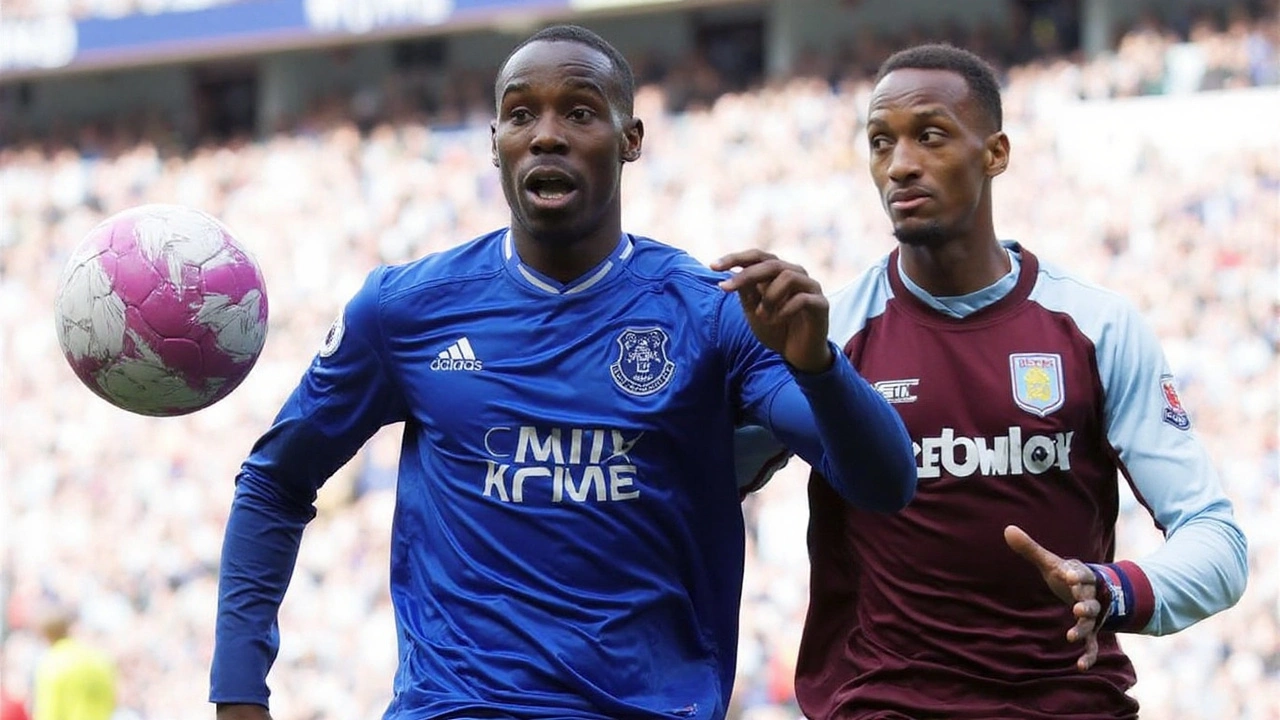Stalemate at Goodison tells two stories: Everton steady, Villa stuck
The Premier League served an early window stalemate on September 13, 2025, with Everton vs Aston Villa ending 0-0 at Goodison Park. The match, streamed live for the 7 am PT / 10 am ET / 3 pm BST kickoff, delivered effort without end product, a pattern that hurts Villa far more than it does Everton.
Everton came in with momentum—two wins, one loss, one draw—and leave with seven points from four games. Villa, now on two points from four, remain in the relegation zone and still searching for a first win of the season. The result cements their worst start to a top-flight campaign since 1997 and adds another blank to a growing list of games lacking a cutting edge.
Goodison’s crowd got a workmanlike performance from the hosts. Jordan Pickford organized a back line of Michael Keane, James Tarkowski, Jake O’Brien, and James Garner tucked in on the right. In midfield, Tim Iroegbunam and Idrissa Gueye did the screening, while Kiernan Dewsbury-Hall, Jack Grealish, and Iliman Ndiaye rotated to give Beto some service up front. The shape shifted between a 4-3-3 and a 4-2-3-1 depending on Everton’s press, but the theme was the same: solid structure, limited risk, and the hope that a moment from Grealish or a Beto run might break things open.
Villa’s problem wasn’t organization; it was punch. They moved the ball neatly enough at times, but their sequences fizzled near the box. Crosses didn’t find targets, through balls lacked timing, and when they did get a look from range, the shots either took a touch off a defender or drifted harmlessly wide. It’s the same story that has haunted their start—territory without threat, phases without payoff.
The first half was cagey by design. Everton’s double pivot clogged lanes and forced Villa to funnel play into crowded central spaces. When Villa tried to go around the press, Tarkowski and Keane attacked everything in the air, with O’Brien stepping out to intercept in the channels. On Everton’s side, Grealish tried to pull markers out of shape by drifting inside from the left, freeing Ndiaye to slip between lines. A few half-chances were carved out, but nothing to truly stress either goalkeeper.
After the break, the tempo lifted a touch. Everton pushed Garner higher to invert on the right, allowing Dewsbury-Hall to surge beyond the ball and combine with Ndiaye. Beto battled and rolled his marker once or twice, but Villa’s retreating cover smothered the final action. For Villa, transitional moments looked their best bet, yet their breaks lacked numbers and conviction. The final ball remained a problem all afternoon.
This wasn’t a game of big metrics or high drama. Think more scrambles from set pieces, blocked shots, and a lot of defending done facing the ball rather than chasing runners. Pickford handled routine work cleanly. At the other end, Villa’s keeper had rushes to claim crosses and a pair of low saves, but nothing that demanded heroics. By the final quarter-hour, you could feel Goodison wanting a surge; the match never really gave it.

Tactics, selection calls, and what comes next
Everton’s selection hinted at their identity this season: pragmatic base, with just enough creativity to chase a breakthrough. Iroegbunam screened well against his former club’s midfield, while Gueye’s reading of play kept second balls in Everton’s favor. Grealish’s presence altered how Villa defended the left side, often drawing two men and freeing space for overlap, even if the final pass didn’t land. Dewsbury-Hall’s energy set the pressing triggers, and Ndiaye worked the half-spaces to pull Villa’s back line around. It looked coherent, if not explosive.
For Villa, the problem reads simple and feels complex: they need goals. The patterns are there up to the edge of the penalty area, but the connections inside it aren’t. Runs aren’t matched with passes; crosses arrive when the box is empty; shots lack conviction. That’s how you end up with two points from four matches, even when the defensive shape holds.
There were smaller plot lines worth noting. Garner’s role as a tucked-in right-back allowed Everton to crowd midfield and slow Villa’s build. O’Brien stepped out with confidence, showing why he was trusted alongside Tarkowski and Keane. Beto’s hold-up play gave Everton a platform, and while he didn’t get a clean sight at goal, he did enough to keep Villa honest. On the other side, Villa’s wide players tracked back diligently, which kept Everton’s full-backs from overloading, but it also meant their counters often started too deep.
What the draw means is clear. Everton remain on a steady early trajectory, unbeaten in three and proving harder to beat than last season’s wobblier stretches. There’s craft to unlock in that front four—especially as Grealish, Dewsbury-Hall, and Ndiaye find rhythm together—but the base layer looks trustworthy. Villa, meanwhile, leave with more questions than answers. The table doesn’t care about promising sequences; it cares about points, and right now they have too few.
The schedule won’t wait. Villa need a spark—whether that’s a change in selection, a tweak in the press, or simply a cold-blooded finish to flip a tight game. Everton will feel they missed a chance to bank three points against an opponent in trouble, but a clean sheet and another point keep them in the mix as September unfolds.
By full-time, both sets of supporters knew exactly what they’d seen. For Everton, a platform to build on. For Villa, a warning siren that’s getting louder.
- Score: Everton 0-0 Aston Villa
- Venue: Goodison Park
- Kickoff: 7 am PT / 10 am ET / 3 pm BST
- Everton record: 2-1-1 (7 points)
- Aston Villa record: 0-2-2 (2 points), worst start since 1997
- Everton XI: Pickford; Keane, Tarkowski, O’Brien, Garner; Iroegbunam, Gueye; Dewsbury-Hall, Grealish, Ndiaye; Beto
